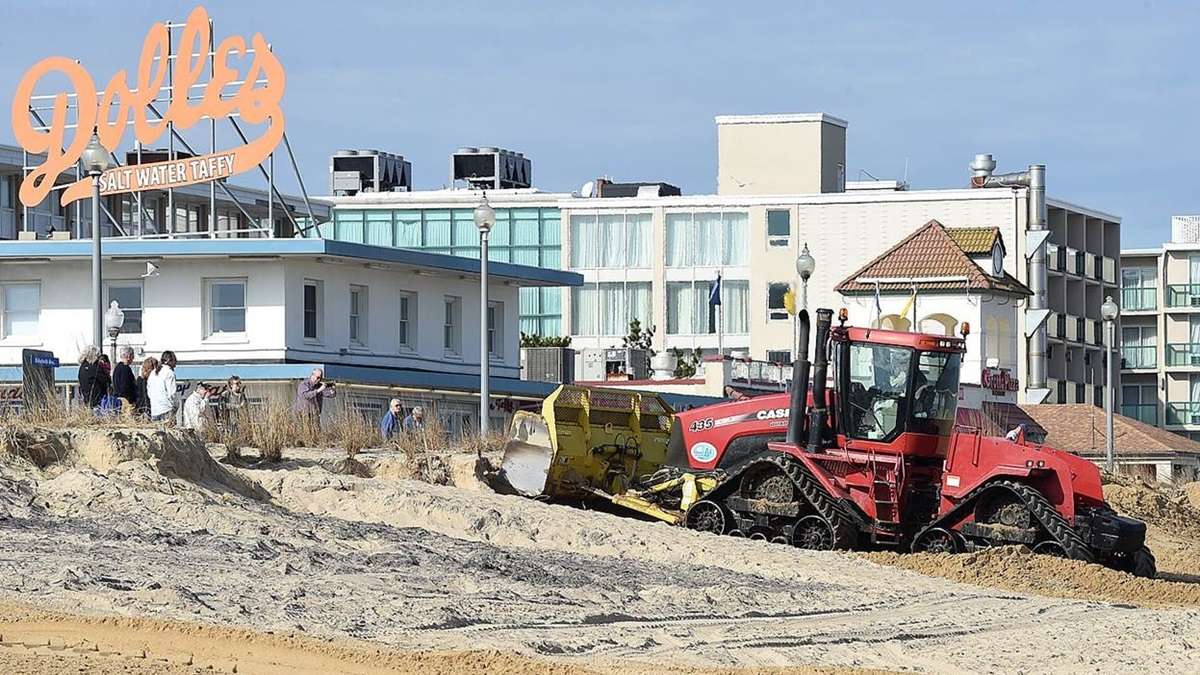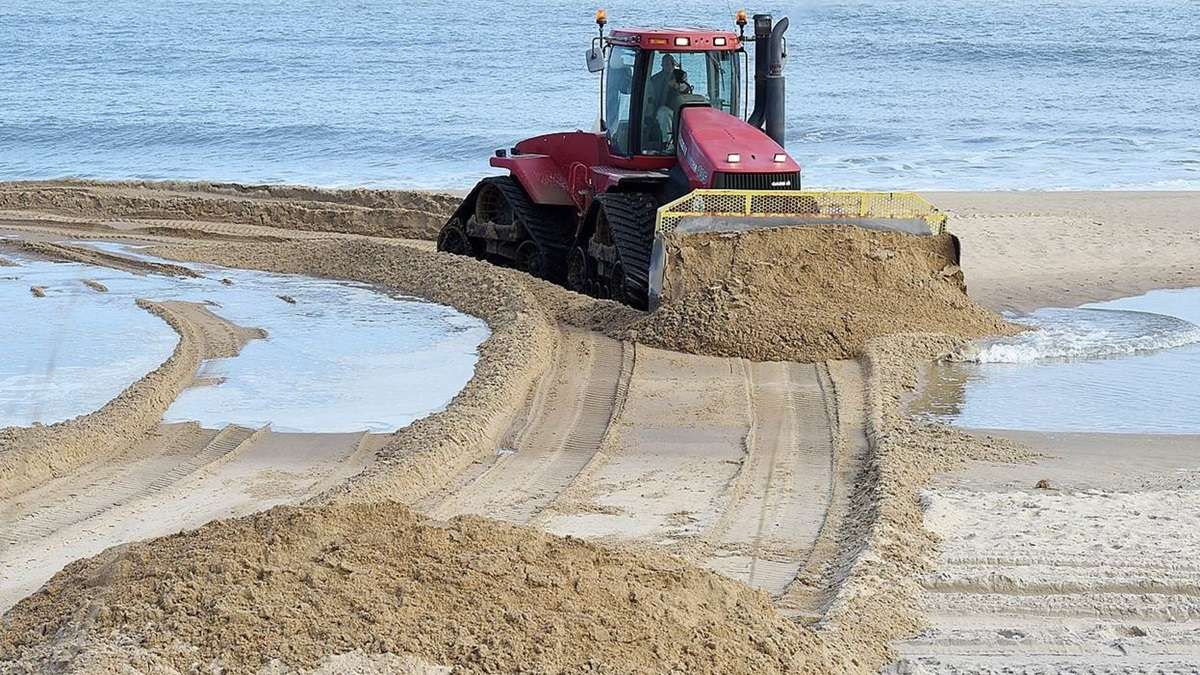Environmentalists request change to Delaware’s beach replenishment practices
The Surfrider Foundation in Delaware is calling for upgraded beach replenishment practices.
Delaware’s chapter of the Surfrider Foundation, a non-profit dedicated to the protection of ocean, waves and beaches, says the current approach to beach replenishment comes along with high maintenance costs and increased risk of injury to beach goers.
Now the organization is asking the state to consider other options to restore beach erosion that is less costly and safer.
“I like to take my kids to the beach. I grew up on the beach and I have a lot of memories. I want to see it preserved in the right way. I want to see it safe,” said John Doerfler of the Delaware chapter.
“Secondly, we only have a limited amount of money and budgets are getting tighter. A large amount of money is going to 24 miles of Delaware coastline. How can we spend it better?”
After Delaware’s beaches survived winter storm Jonas without much infrastructure damage, the state credited the installation of dunes with the prevention of property damage.
But the state will soon set about rebuilding the dunes, and begin beach replenishment for beaches that suffered significant sand loss.
Beach replenishment slows down erosion by dredging sand from the ocean floor and then pumping it onto the beach through pipes.
The projects, which are conducted by the Army Corps of Engineers, build storm-ready beaches and engineered sand dunes as a way to protect property and restore beaches after storms.
More than $80 million of federal funding has been spent on initial construction and periodic nourishment in Lewes, Rehoboth, Dewey, Bethany, South Bethany, the Indian River Inlet Sand Bypass and Fenwick Island beaches in Delaware.
In addition, Delaware has received more than $50 million is storm repair funding, which is done at 100 percent federal cost, and has received more than $33 million from non-federal funding for those beaches.
However, the Surfrider Foundation says these million dollar projects are too costly and question the sustainability.
“Mother Nature is changing, weather patterns are changing and sea levels are rising,” Doerfler said.
“There’s not a template change from the Army Corp of Engineers to address new threats, and no general oversight for when they put in these nourishment projects.”
Art Trembanis, a professor of oceanography at the University of Delaware, said he agrees beach replenishment isn’t a real solution to erosion.
Sometimes the results can be unwanted, he said, creating shell ash or mud balls, or courser sediment that stays put longer and changes the shape of the beach.
“It’s just putting a Band-Aid on the bleed,” Trembanis said.
Doerfler said while dunes protect lives and property, they won’t be successful alone in the future. He said sandbars have proven much more successful in other coastal areas.
“It’s like saying. ‘The bathrooms are great, but there’s no ceiling over the bedroom,’” Doerfler said.
There are a variety of other strategies to beach replenishment that have been used in other parts of the country or internationally, such as using coastal buffers and attempting to build marsh areas, Trembanis said.
“Retreat” also has been used, which involves moving buildings back from the shoreline to allow it to move landward and take its natural course, he said.
“Innovation is to think about options like, ‘Where can we retreat or allow nature to take its course?’” Trembanis said. “I think sometimes we tend to say, ‘Here’s a storm, we have to respond to it.’”
Still, the Army Corps of Engineers says the current method of beach replenishment is the most effective way to restore beaches.
In a 2015 media statement the agency said, “Their primary purpose is to reduce damages from coastal storms, and beach fill represents the most resilient, least environmentally intrusive, and most cost effective method to achieve this.”
The Surfrider Foundation said it’s also concerned about safety due to the moving and reshaping of the beach. After a beach replenishment project is completed in Delaware, the beach results in steep drop-offs into the ocean, and waves breaking directly onto the beach in the summer, Doerfler said.
“The beaches are more dangerous,” he said. “Wave impacts on the beach are extremely unsafe.”
The Army Corps of Engineers points to an independent study released in December that researched beach replenishment on Cape May in order to address safety concerns from area residents.
The study found that, “beach fill projects have not resulted in steeper beach slopes in the surf zone,” and alternatives requiring additional sand on the beaches were seen as, “unfeasible from a performance perspective.”
Beaches also go through natural changes in response to environmental conditions, such as storms, and through the change of seasons, Trembanis said. He said the notion that beach replenishment causes safety issues is an over generalization.
“I understand where their concern is coming from,” he said. “But I can think of examples where at a more dangerous beach (beach replenishment) made it less dangerous.”
A more troublesome concern, Trembanis said, is an environmental one as ecosystems can be destroyed.
For example, he said there are colonies of worms that build reefs out of sand that become homes, and are an important habitat for shore birds and horseshoe crabs. Beach replenishment projects can bury those, Trembanis said.
The Surfrider Foundation says in 20 years there haven’t been any public hearings or input about the projects.
Now it’s asking for a task force consisting of coastal engineers, scientists and environmental groups to study the current landscape of beach management practices; examine its effectiveness and identify new and innovative solutions that are being researched and evaluated.
In addition, Doerfler said residents should have a say in how the state spends its taxpayer money.
“As public taxpayers we don’t get a say in the process,” he said.
WHYY is your source for fact-based, in-depth journalism and information. As a nonprofit organization, we rely on financial support from readers like you. Please give today.













